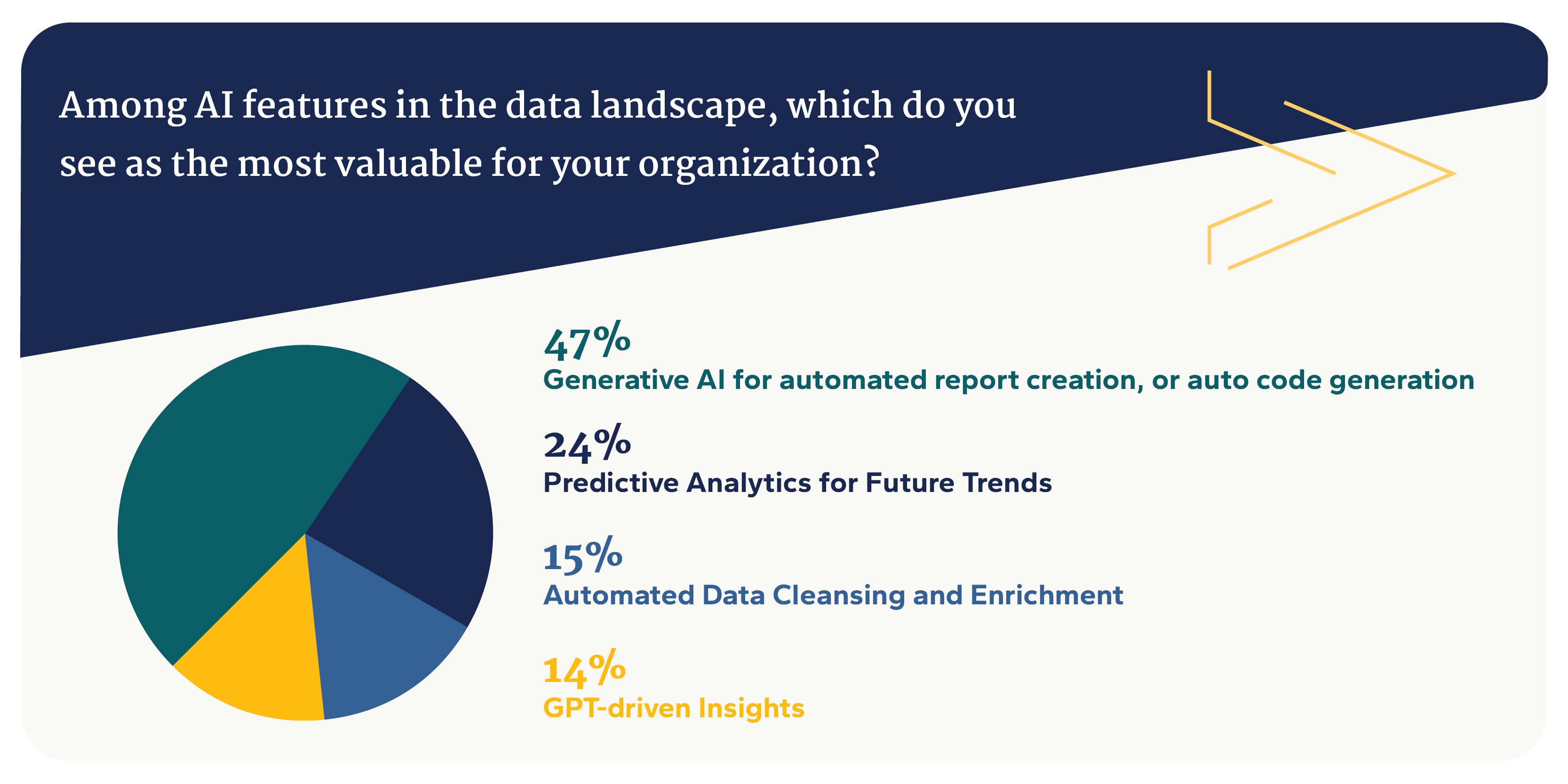Key Takeaways
- Artificial intelligence is a top priority for CEOs; 82% of those surveyed are already deploying or planning to implement GenAI in 2024.
- The quality, quantity, and accessibility of your data directly impact the performance and accuracy of AI.
- To optimize your data for AI, prioritize data collection, preprocessing, unification, governance, and annotation.
A recent IBM study discovered that generative AI — deep-learning models that can take raw data and learn to generate text, images, videos, or other outputs when prompted — is a top priority for CEOs.
82% of business leaders surveyed are already deploying or planning to implement GenAI in 2024.
As AI continues to transform industries, the foundation of its success lies in high-quality data. Optimizing your data now is crucial for harnessing the full potential of AI in the future.
Define Your AI Objectives
Before diving into data preparation, your organization must have a clear understanding of what you hope to gain from AI. To identify potential quick wins, consider areas where deploying AI could have an immediate impact. Whether it's task automation, customer service, or product development, defining your AI goals will help you identify relevant data sources and types.

Optimize Your Data for AI
The quality, quantity, and accessibility of your data directly impact the performance and accuracy of AI. Poor-quality data can lead AI models to produce inaccurate, biased, or irrelevant outcomes.
In our recent survey, 17% of respondents reported their biggest barrier to implementing AI is challenges with data quality.
An effective way to illustrate the role of data in AI is to think of a restaurant. You would not expect to be presented with a plate of raw ingredients; you would anticipate a complete, cohesive dish. To create that dish, the raw ingredients would have first been collected from a store. The ingredients would then be brought to a kitchen, where they would be sliced, mixed, cooked, and plated before being brought to your table.
Imagine your raw data are the ingredients — they must be properly prepared before being served to an AI algorithm.
Here are a few strategies for optimizing your data for AI:
Accumulate Raw Data
Algorithms become intelligent only when trained on large amounts of organization-specific data. Gathering historical and real-time data from multiple sources, such as transactional systems, customer interactions, and sensors, is crucial.
Practice Good Data Hygiene
Data cleansing, also known as data preprocessing, is the process of removing inconsistencies, errors, and duplicates from a dataset. This process ensures your data points are reliable and will not introduce errors into AI algorithms. Cleansing involves several steps:
- Handling Missing Data: Decide how you will deal with missing values, such as imputation or removal.
- Removing Duplicates: Identify and remove duplicate entries to prevent bias.
- Correcting Errors: Identify and resolve errors such as incorrect entries, formatting issues, and outliers.
- Standardizing: Standardize data to a common format to help promote consistency.
Unify Your Data
At many organizations, data is spread across multiple channels and tools. It may be blocked by gatekeepers, making it inaccessible to most of the team. This kind of fragmented or siloed data can hinder AI’s learning ability. Consolidating your data in a data warehouse will help eliminate data silos and create a single source of truth.
Govern Your Data
Data governance refers to the management of data throughout its lifecycle. Key aspects of data governance include:
- Quality Management: Perform regular data checks and audits.
- Privacy: Maintain compliance with privacy laws.
- Control: Define and enforce data access policies to protect sensitive information.
Annotate and Organize Your Assets
Adding one or more meaningful and informative labels to each of your data assets provides context that AI models need in order to learn from it. Assign each asset a plain-language name that clearly reflects its contents, attributes, and purpose.
How Eide Bailly Can Help
Clean, well-organized data ensures more accurate insights, better decision-making, and improved operational efficiency. Our data professionals can help position your organization to leverage advanced AI capabilities, stay competitive, and drive innovation.
Why Prioritizing Your Data is the First Step to AI Innovation
Digital
Who We Are
Eide Bailly is a CPA firm bringing practical expertise in tax, audit, and advisory to help you perform, protect, and prosper with confidence.



